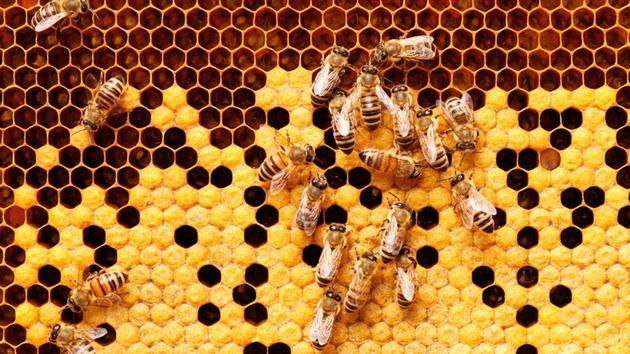"We want to help beekeepers, land managers and people who design seed mixtures to select the plants that are most attractive to honeybees." Morgan Carr-Markel, doctoral student at the University of Minnesota, is at the origin of a study on the dance of the bees published Wednesday, February 12 in the review Plos One . While many landowners in the northern Midwest of the United States want to restore grasslands to fight monoculture, the team of Morgan Carr-Markel wondered about the consequences of this restoration on bee colonies. "We wanted to know if, as they are set up today, restored meadows can also attract honey bees, which are struggling to adapt to these developments."
Read also: Organic farming benefits bees
The researchers therefore analyzed the behavior of bees when foraging restored meadows. Objective: better understand their food preferences and help protect them by allowing farmers to choose the right flowers.
The bee colonies gather thousands of pickers. When one of them unearths a particularly interesting plot of flowers, she informs her sisters through a very codified dance: the bee realizes eight, and when she is in the middle of this eight, moves her abdomen from back and forth. The angle of this wriggling then indicates to the other bees the direction to take, relative to the sun, to reach the area to be gathered. The duration of the wriggling corresponds to the distance of the area from the hive. And the more interesting the area, the longer the dance will last.
Essential to crop health
By studying some 1,500 dances of bees belonging to colonies placed near two large meadows, the researchers observed that the proportion of dances increased significantly in late summer and early fall. "This corresponds to the flowering period of the Asteraceae family" . With a view to restoring spaces, it can therefore be interesting to favor this type of floral species in particular, the researchers conclude. The bees will then benefit from optimal conditions to carry out their pollination work and, in so doing, contribute to the economy and to food.
Bees seem indeed essential to the smooth running of crops. According to Greenpeace, a third of our food depends on pollination by bees, without which the cost of growing fruits and vegetables would increase considerably. The most widespread species, Apis mellifera , would allow the United States to save 14 billion euros per year, while 4000 varieties of vegetables grown in Europe would not exist without the hard work of these insects. But victims of human activities, they have an increasing mortality. The causes are multiple, mainly too much exposure to pathogens, parasites or pesticides and the rise of monocultures, which are scarce available food sources. Thus, in the United States, 30 to 40% of domestic colonies have disappeared since 2006, compared to 20% in Europe.











